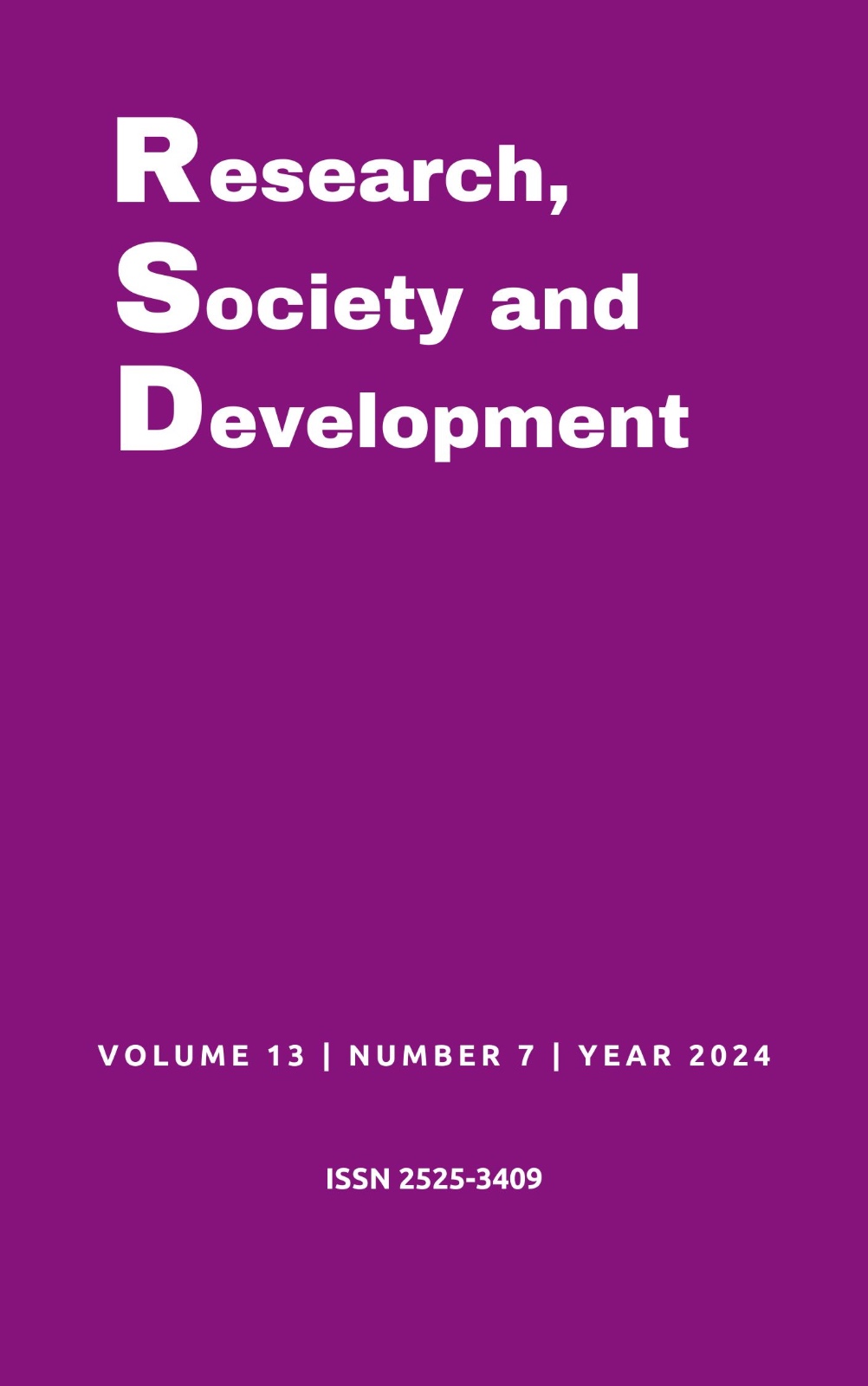A Comparison of U-Net with Conditional Generative Adversarial Networks and Cycle-Consistent Adversarial Networks for real seismic data interpolation: Tupi Field
DOI:
https://doi.org/10.33448/rsd-v13i7.46226Keywords:
Seismic interpolation, U-Net, CGAN, CycleGAN, Comparison, Real data.Abstract
Deep learning models have been used to improve seismic trace interpolation in recent years. Encode-Decode models, such as U-Net, have been implemented to solve interpolation problems. The success of U-Net in seismic interpolation has inspired us to test the U-net also as an image generator for further Generative Adversarial Network (GAN) interpolation models. The objective of the present paper is to compare the performance of U-Net inside the GAN models for seismic interpolation: the U-Net alone and two GAN models, the conditional GAN (cGAN) and the Cycle Consistent GAN (CycleGAN), both using the U-Net as a generator inside their workflow. We test the methodologies for two scenarios: regular and irregular interpolation. All tests were performed in a real dataset from the Tupi Field which belongs to the Brazilian pre-salt region. A comparison of the statistical metrics shows that cGAN performs better than CycleGAN and the U-Net alone in most cases. The computational training time of the cGAN model, for all interpolation scenarios, is better than the CycleGAN. Finally, the cGAN training time is comparable to the training of the U-Net alone.
References
Boletim Mensal da Produção de Petróleo e Gás Natural. (2020). Agência Nacional do Petróleo, Gás Natural e Biocombustíveis. https://www.gov.br/anp/pt-br/centrais-de-conteudo/publicacoes/boletins-anp/boletins/boletim-mensal-da-producao-de-petroleo-e-gas-natural
Chang, D., Yang, W., Yong, X., & Li, H. (2018). Generative adversarial networks for seismic data interpolation. SEG 2018 Workshop: SEG Maximizing Asset Value Through Artificial Intelligence and Machine Learning, Beijing, China, 17–19 September 2018.
Dou, Y., Li, K., Duan, H., Li, T., Dong, L., & Huang, Z. (2023). MDA GAN: Adversarial-learning-based 3-D seismic data interpolation and reconstruction for complex missing. IEEE transactions on geoscience and remote sensing: a publication of the IEEE Geoscience and Remote Sensing Society, 61, 1–14. https://doi.org/10.1109/tgrs.2023.3249476
Fang, W., Fu, L., Zhang, M., & Li, Z. (2021). Seismic data interpolation based on U-net with texture loss. Geophysics, 86(1), V41–V54. https://doi.org/10.1190/geo2019-0615.1
Gonzalez, J. C., Da Costa, C. A. N., Pinheiro, D., Perez, K. R., Gebre, M. G., De Araújo, J. M., & Lopez, J. (2023). Seismic data interpolation with an iterative workflow and generative adversarial networks. 84th EAGE Annual Conference & Exhibition.
Goodfellow, I., Pouget-Abadie, J., Mirza, M., Xu, B., Warde-Farley, D., Ozair, S., Courville, A., & Bengio, Y. (2020). Generative adversarial networks. Communications of the ACM, 63(11), 139–144. https://doi.org/10.1145/3422622
Isola, P., Zhu, J.-Y., Zhou, T., & Efros, A. A. (2017). Image-to-image translation with conditional adversarial networks. 2017 IEEE Conference on Computer Vision and Pattern Recognition (CVPR).
Kaur, H., Pham, N., & Fomel, S. (2021). Seismic data interpolation using deep learning with generative adversarial networks. Geophysical Prospecting, 69(2), 307–326. https://doi.org/10.1111/1365-2478.13055
Ma, J. (2013). Three-dimensional irregular seismic data reconstruction via low-rank matrix completion. Geophysics, 78(5), V181–V192. https://doi.org/10.1190/geo2012-0465.1
Mirza, M., & Osindero, S. (2014). Conditional generative Adversarial Nets. En arXiv [cs.LG]. http://arxiv.org/abs/1411.1784
Oliveira, D. A. B., Ferreira, R. S., Silva, R., & Vital Brazil, E. (2018). Interpolating seismic data with conditional generative adversarial networks. IEEE geoscience and remote sensing letters: a publication of the IEEE Geoscience and Remote Sensing Society, 15(12), 1952–1956. https://doi.org/10.1109/lgrs.2018.2866199
Pereira,A. S., Shitsuka, D., Parreira, F.,Shitsuka, R. (2018).Metodologia da pesquisa científica. Retrieved from https://repositorio.ufsm.br/.
Porsani, M. J. (1999). Seismic trace interpolation using half‐step prediction filters. Geophysics, 64(5), 1461–1467. https://doi.org/10.1190/1.1444650
Ronneberger, O., Fischer, P., & Brox, T. (2015). U-Net: Convolutional Networks for Biomedical Image Segmentation. En arXiv [cs.CV]. http://arxiv.org/abs/1505.04597
Snell, J., Ridgeway, K., Liao, R., Roads, B. D., Mozer, M. C., & Zemel, R. S. (2017). Learning to generate images with perceptual similarity metrics. 2017 IEEE International Conference on Image Processing (ICIP).
Spitz, S. (1991). Seismic trace interpolation in the F-X domain. Geophysics, 56(6), 785–794. https://doi.org/10.1190/1.1443096
Wang, Z., Simoncelli, E. P., & Bovik, A. C. (2004a). Multiscale structural similarity for image quality assessment. The Thrity-Seventh Asilomar Conference on Signals, Systems & Computers, 2003.
Wang, Zhou, Bovik, A. C., Sheikh, H. R., & Simoncelli, E. P. (2004b). Image quality assessment: from error visibility to structural similarity. IEEE Transactions on Image Processing: A Publication of the IEEE Signal Processing Society, 13(4), 600–612. https://doi.org/10.1109/tip.2003.819861
Yilmaz, O. (2001). Seismic Data Analysis: Processing, inversion, and interpretation of seismic data. Society of Exploration Geophysicists.
Zhu, J.-Y., Park, T., Isola, P., & Efros, A. A. (2017). Unpaired image-to-image translation using cycle-consistent adversarial networks. En arXiv [cs.CV]. http://arxiv.org/abs/1703.10593
Downloads
Published
Issue
Section
License
Copyright (c) 2024 Jaime Andres Collazos Gonzalez; Katerine de Jesus Rincon Perez; Tiago Barros; Gilberto Falkembach Corso; João Medeiros de Araújo

This work is licensed under a Creative Commons Attribution 4.0 International License.
Authors who publish with this journal agree to the following terms:
1) Authors retain copyright and grant the journal right of first publication with the work simultaneously licensed under a Creative Commons Attribution License that allows others to share the work with an acknowledgement of the work's authorship and initial publication in this journal.
2) Authors are able to enter into separate, additional contractual arrangements for the non-exclusive distribution of the journal's published version of the work (e.g., post it to an institutional repository or publish it in a book), with an acknowledgement of its initial publication in this journal.
3) Authors are permitted and encouraged to post their work online (e.g., in institutional repositories or on their website) prior to and during the submission process, as it can lead to productive exchanges, as well as earlier and greater citation of published work.


